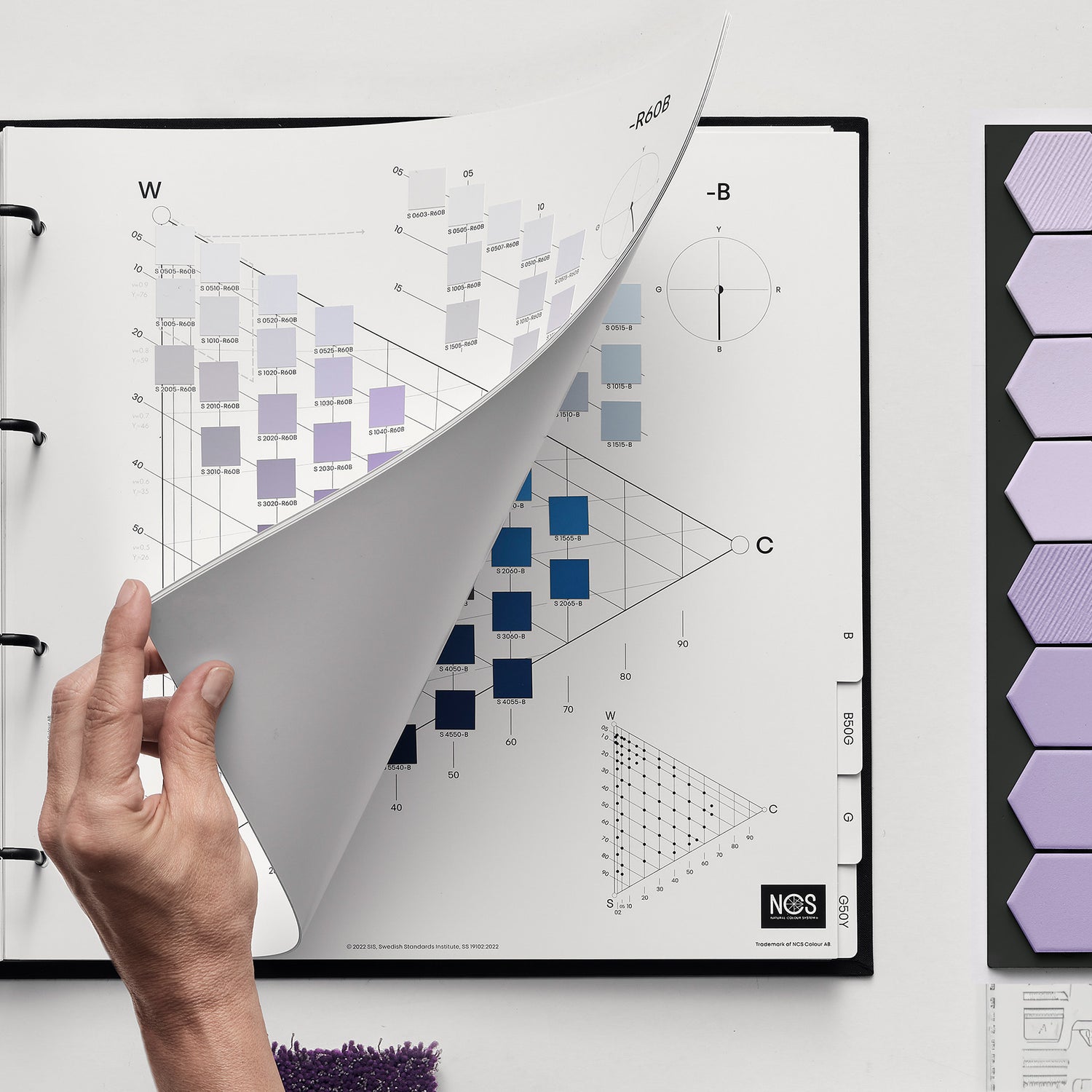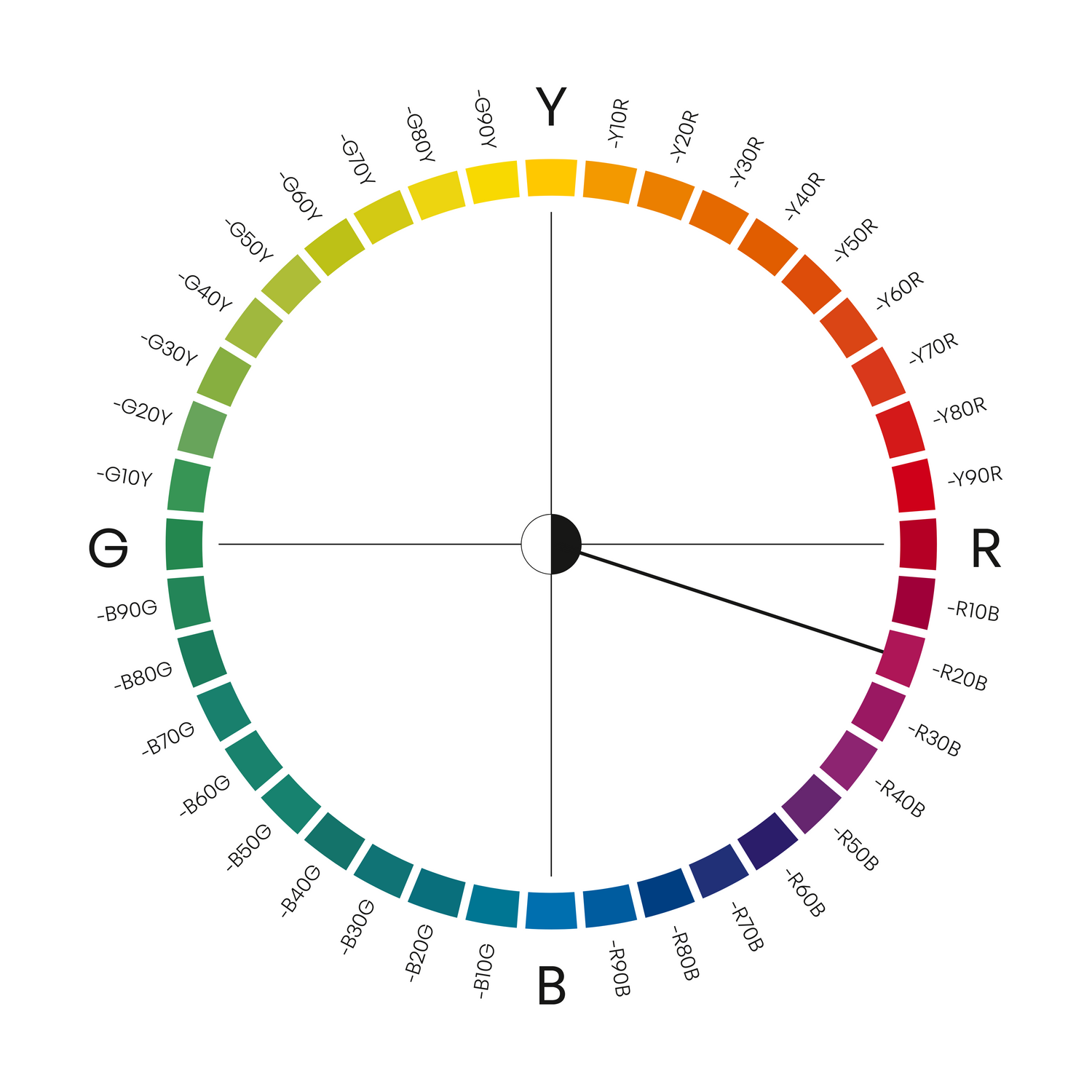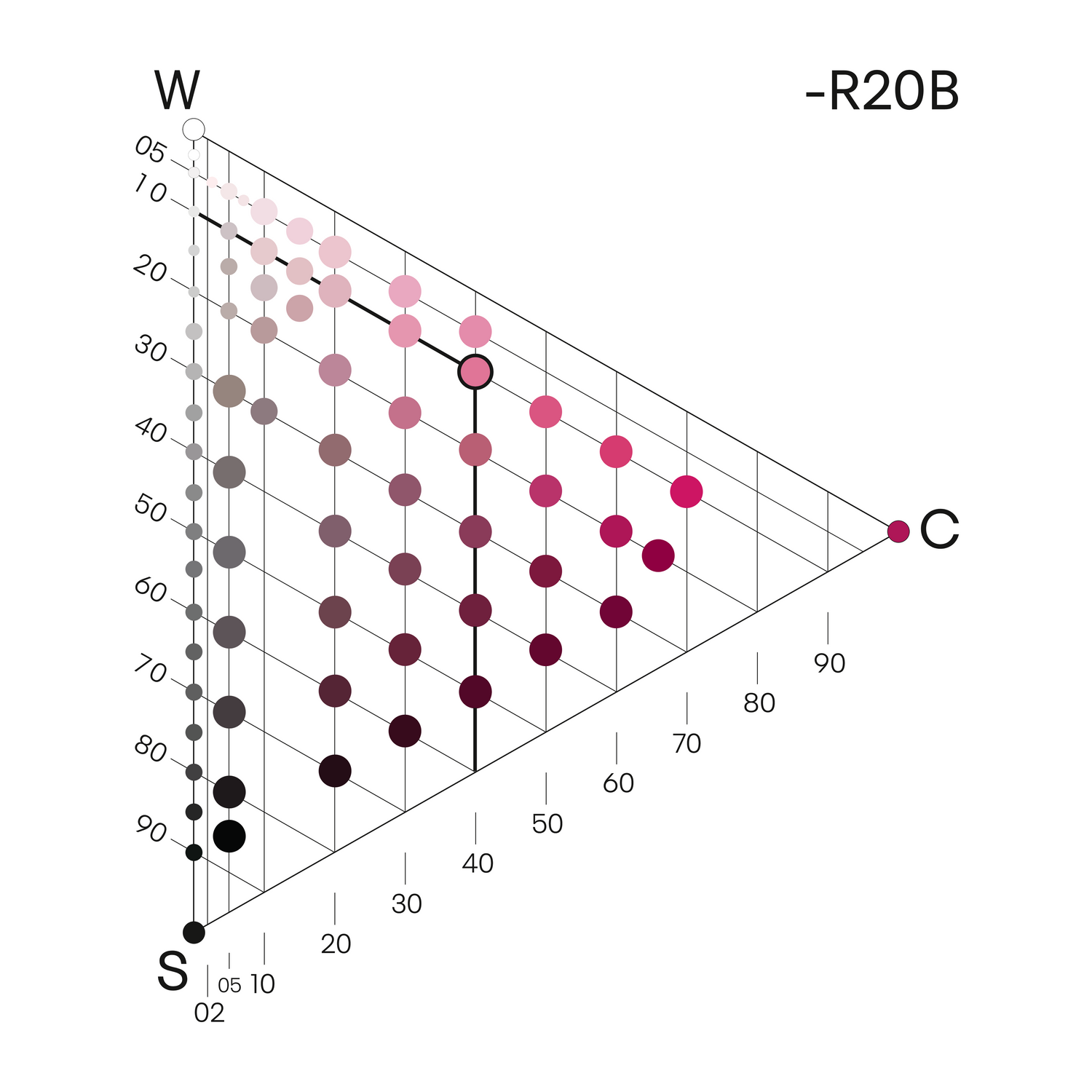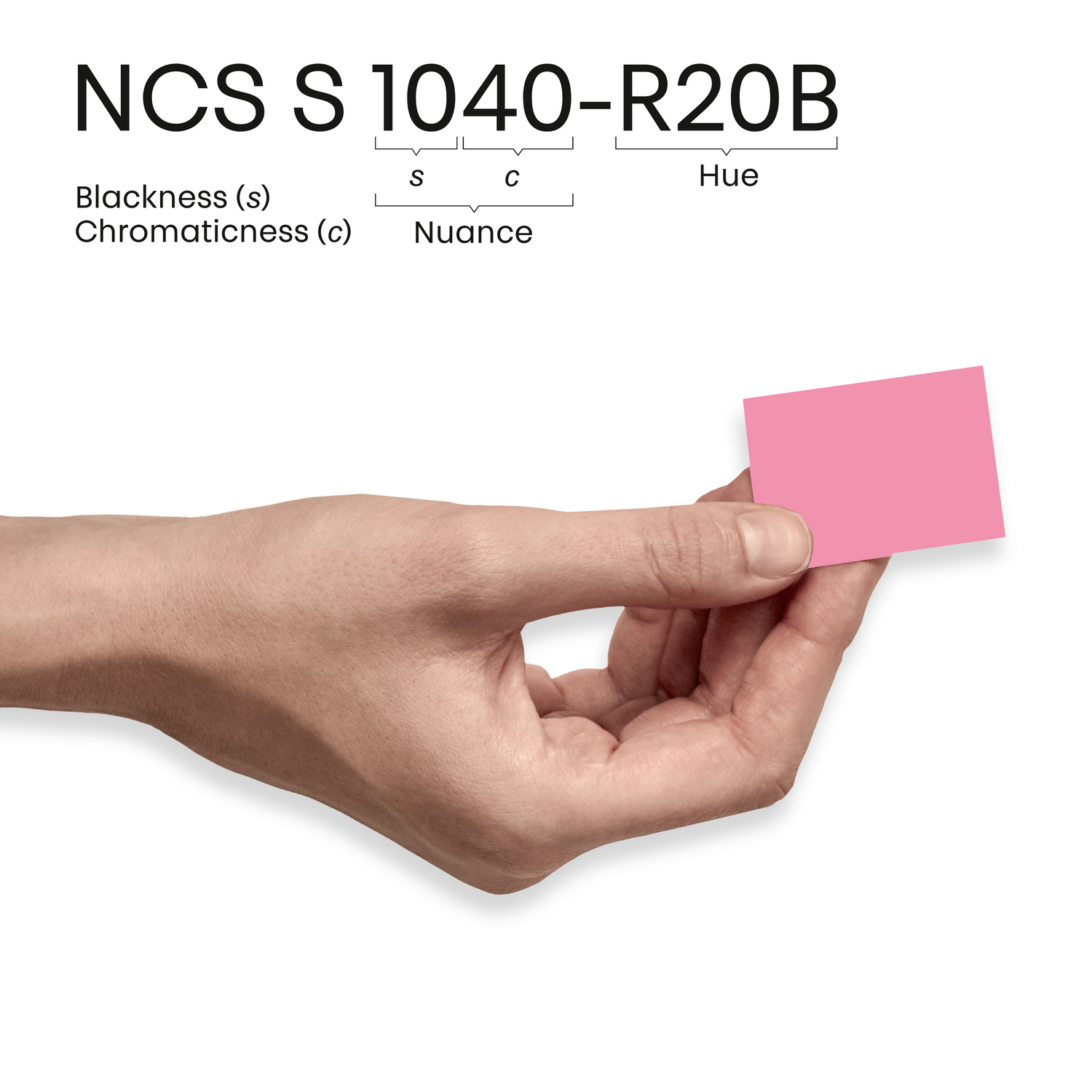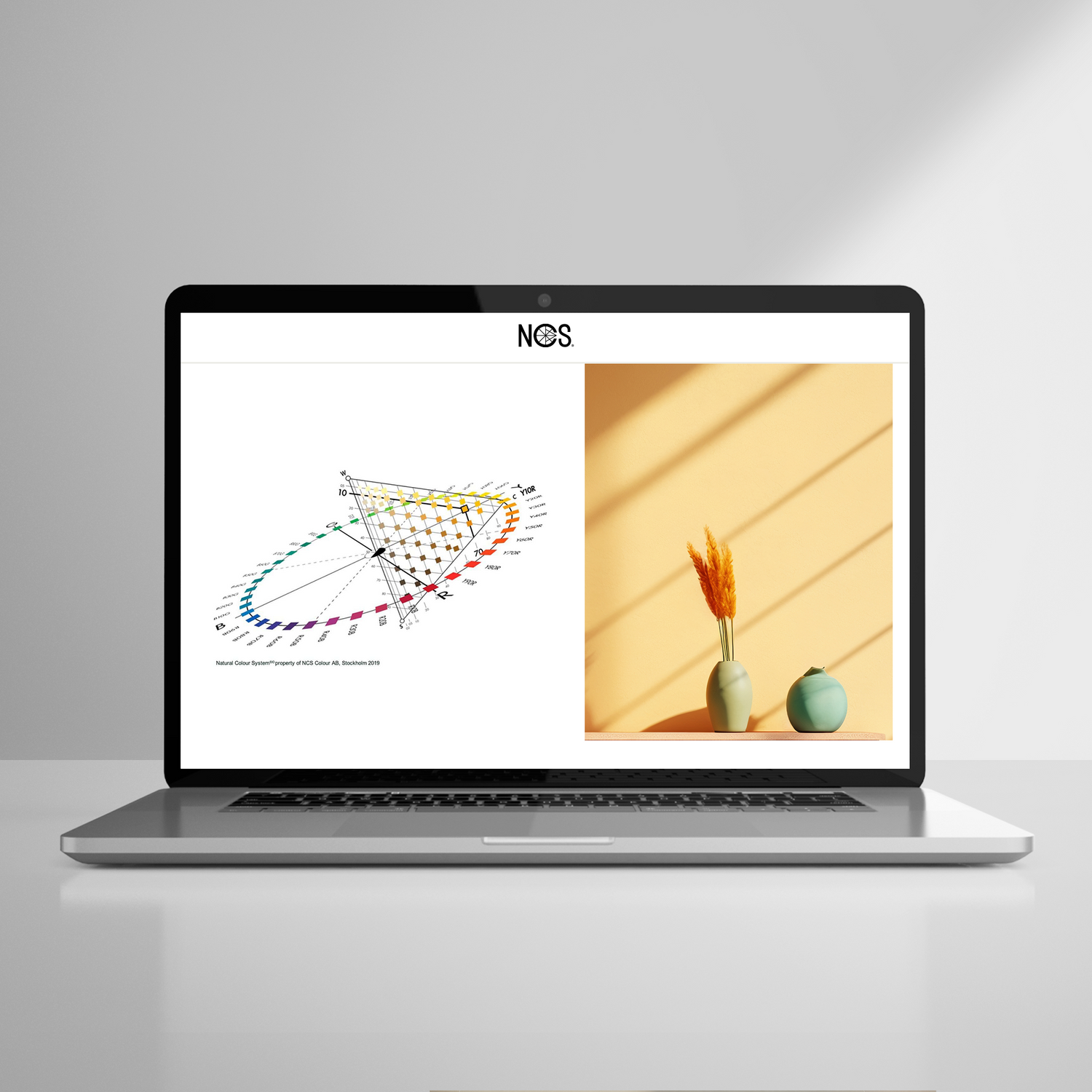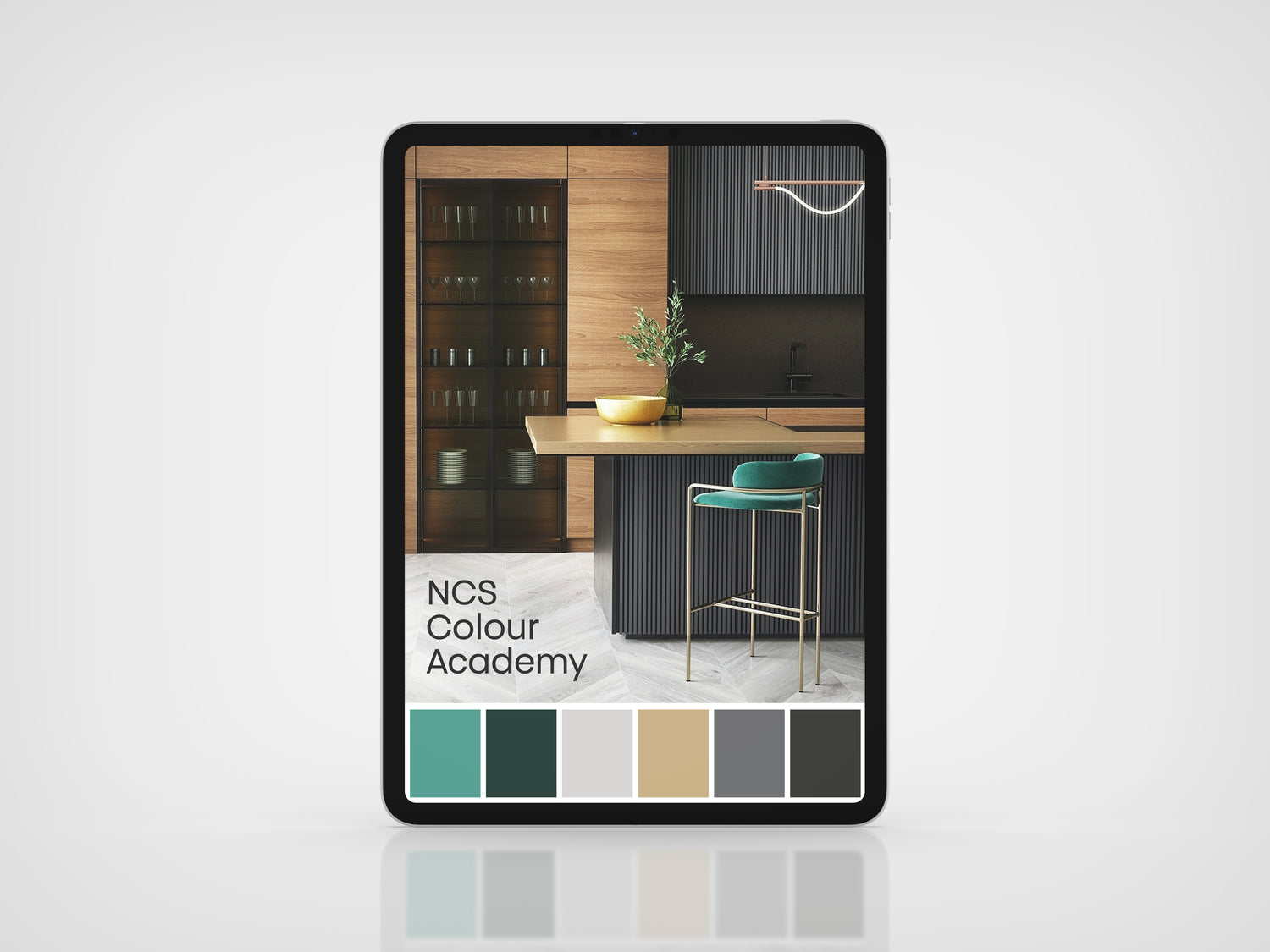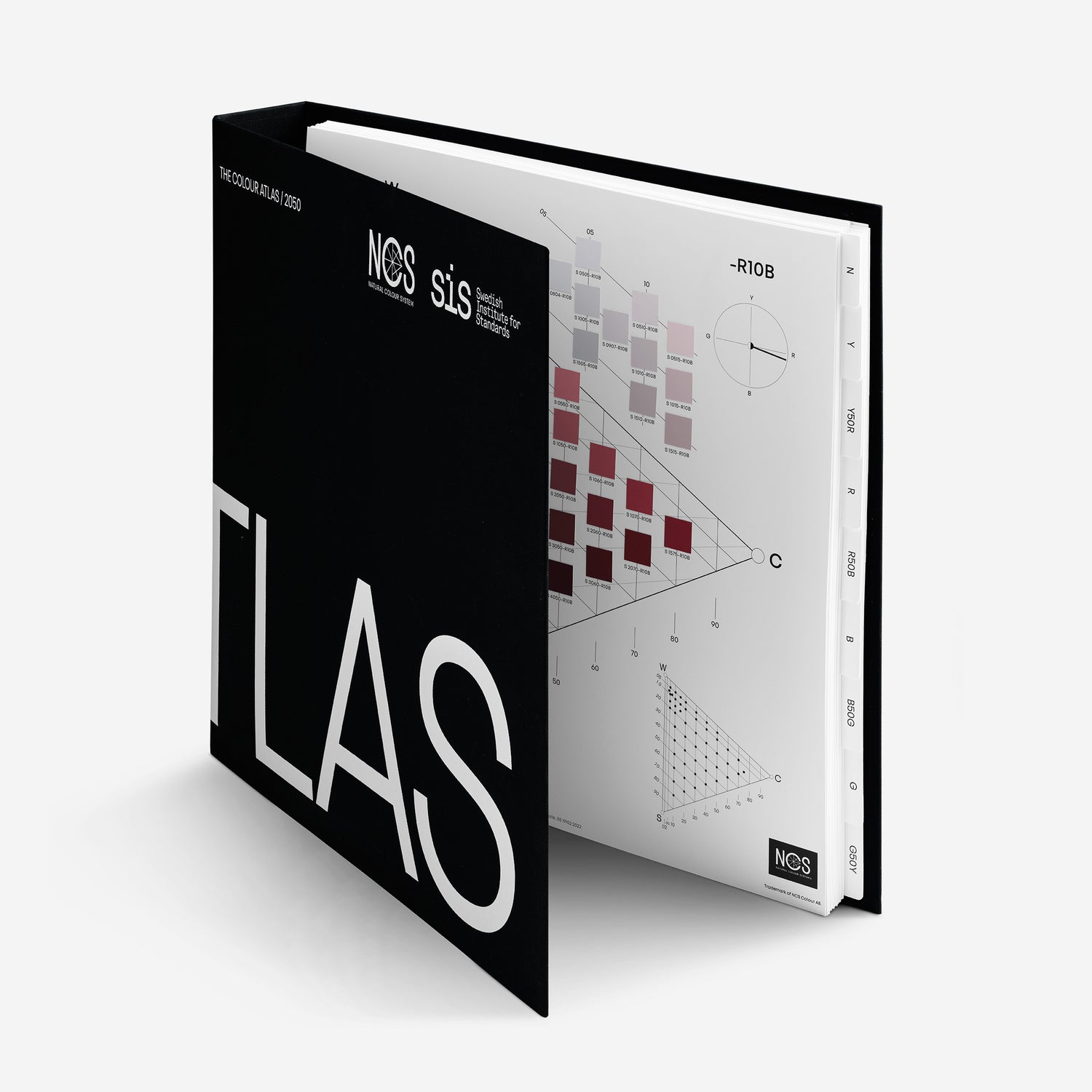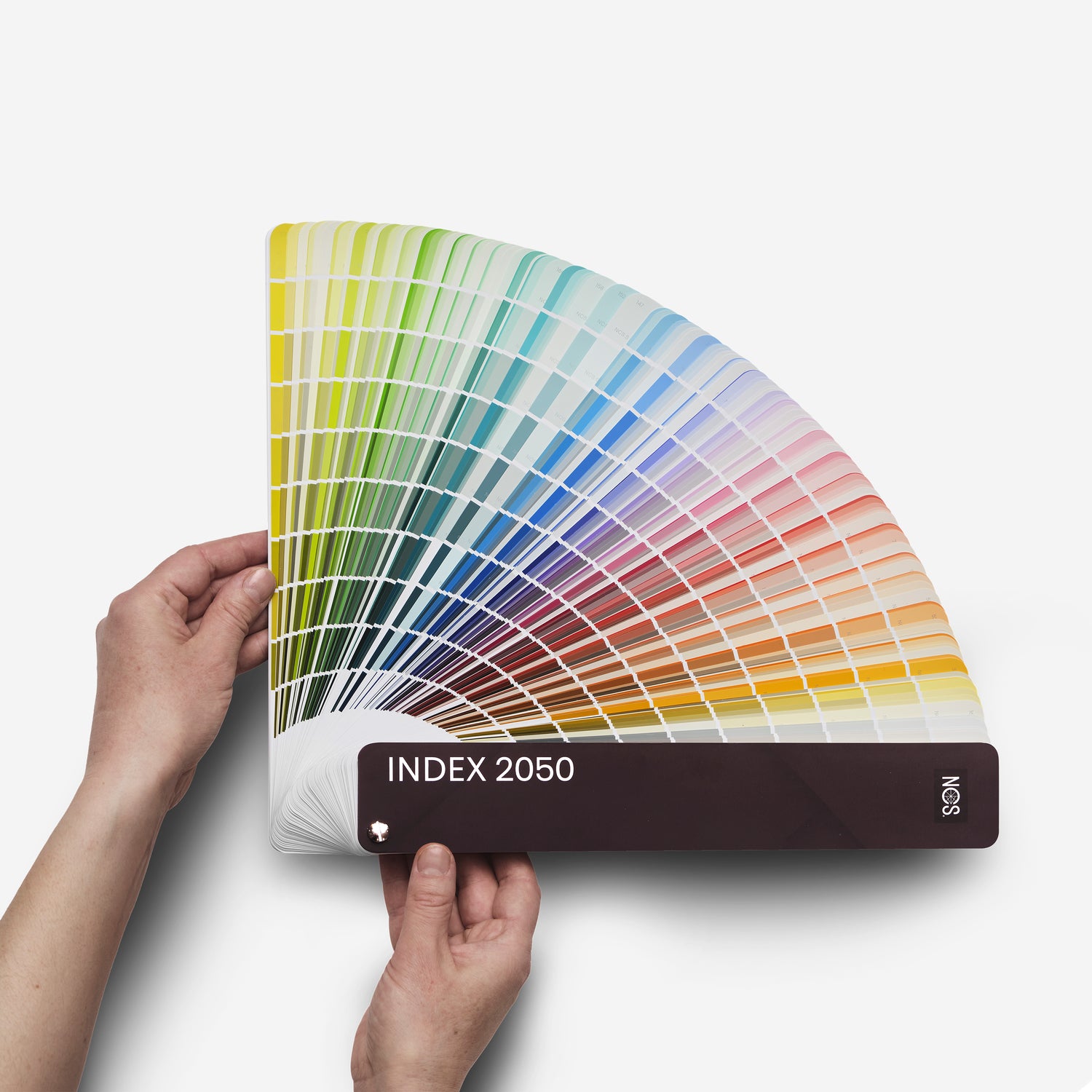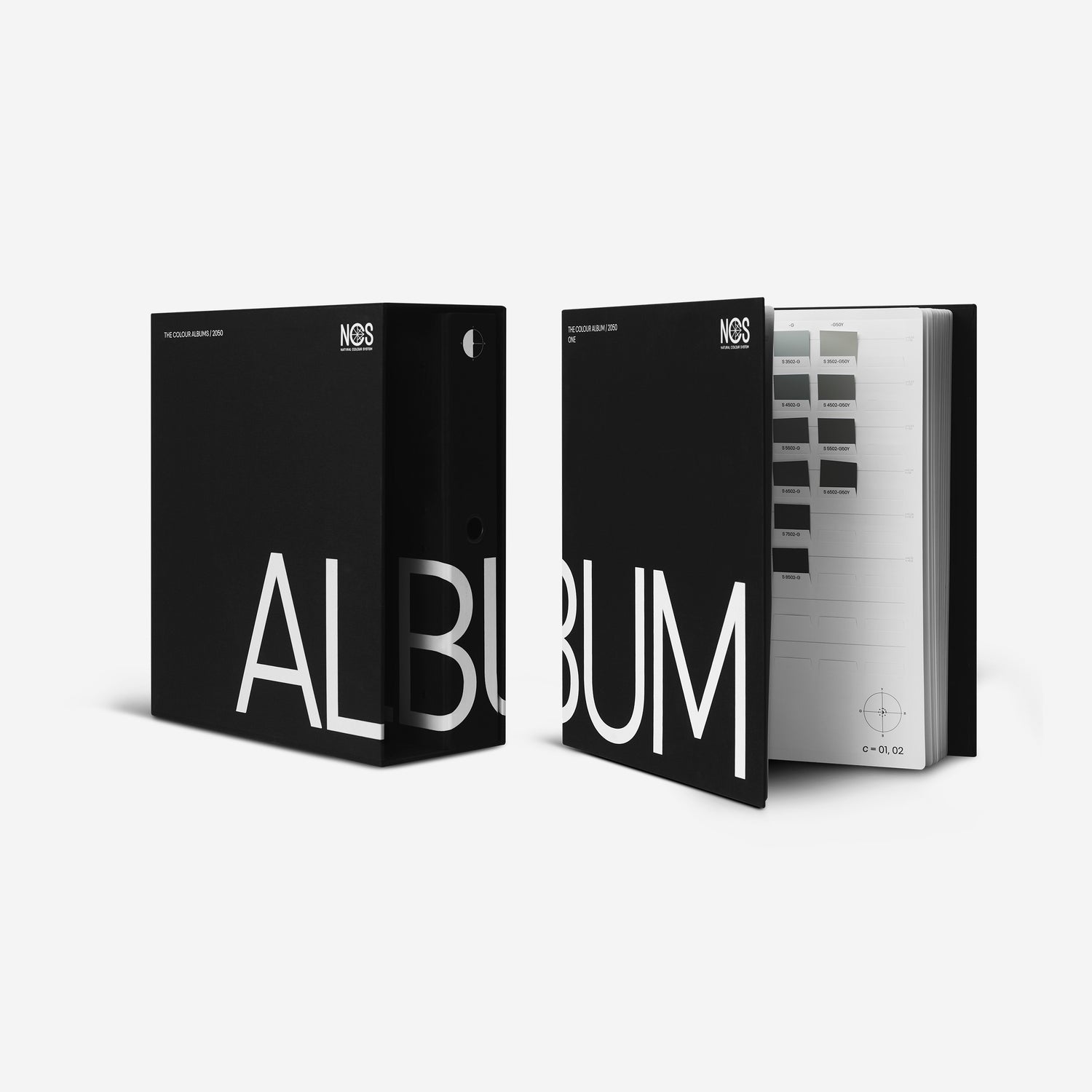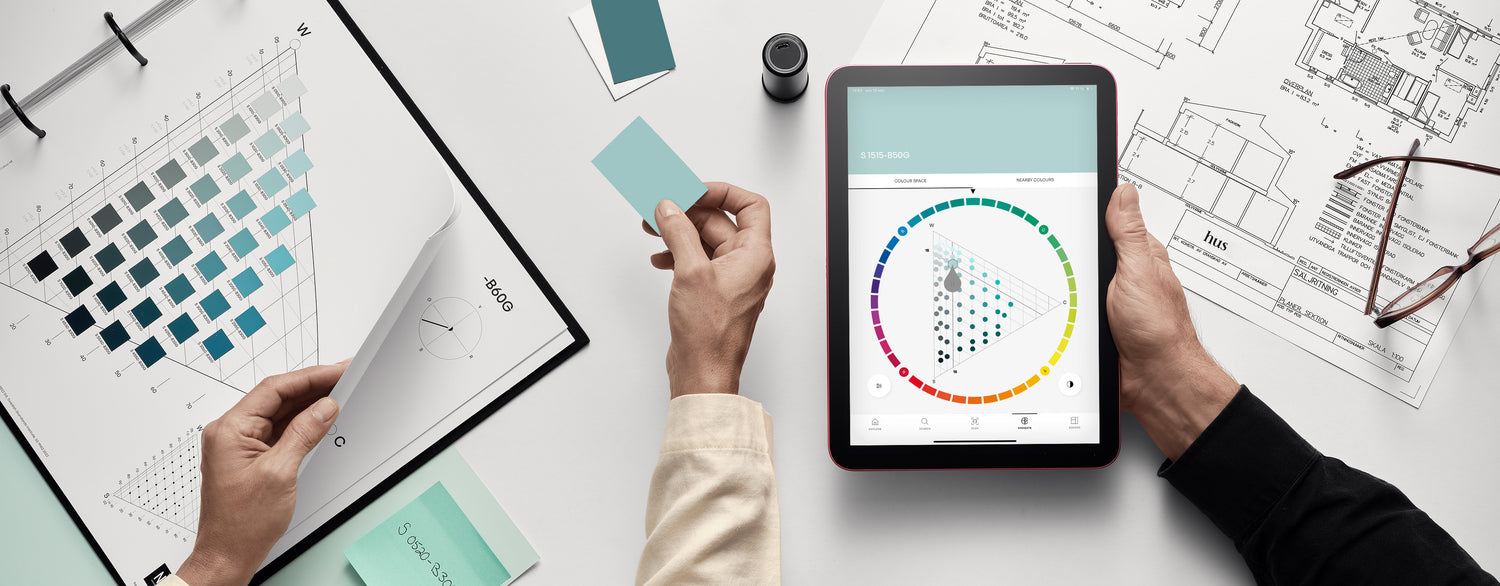
Learn the NCS System®
Describe any imaginable surface colour with NCS. Learn the NCS System and enjoy the smartness of colour.
colour harmonies
Get colour confidence with NCS
The possibilities of colour harmonies and combinations open up with the colour language of NCS. On this page, you will learn how to use the NCS System to amplify your colour choices and creation of colour palettes.
The NCS Natural Colour System®
3 simple steps to identify any colour.

"To make life easy for designers, we use the NCS System, creating our own colour collection that all fit together in perfect harmony. This enables colourful matches within entire interior concepts and the ability to create bespoke solutions for clients.”
– Torben Hansen, Founder & Director Schotten & Hansen
Five essential parts
Unpacking the NCS System
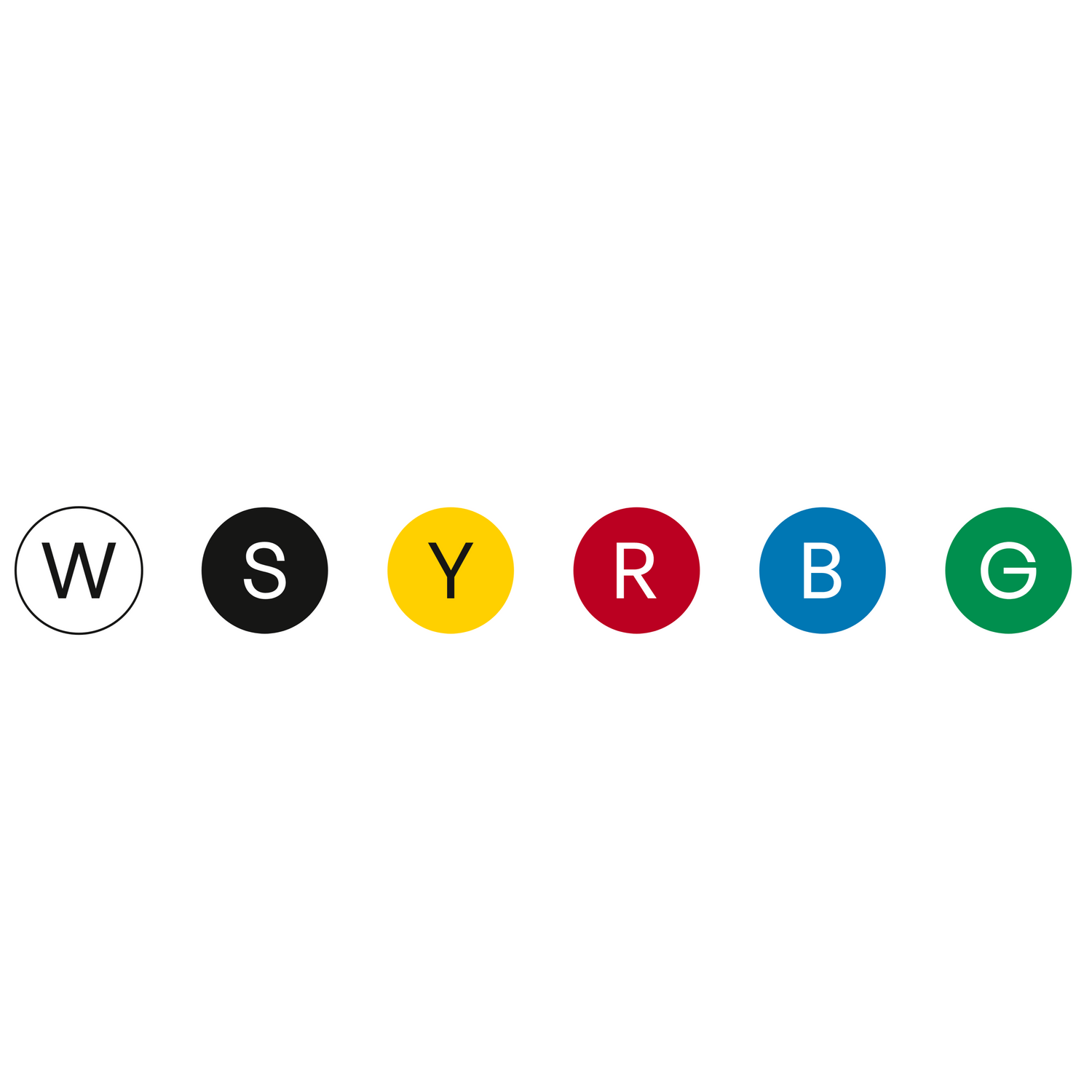
Elementary Colours
Six elementary colours are perceived as “pure” and hold the key to the 10 million colours our eyes can detect. A pure yellow, for instance, does not include red or green, just as a pure blue contains no red or green.
These six colours form the foundation of the NCS notations, which make it possible to describe any of the 10 million colours that form our world.
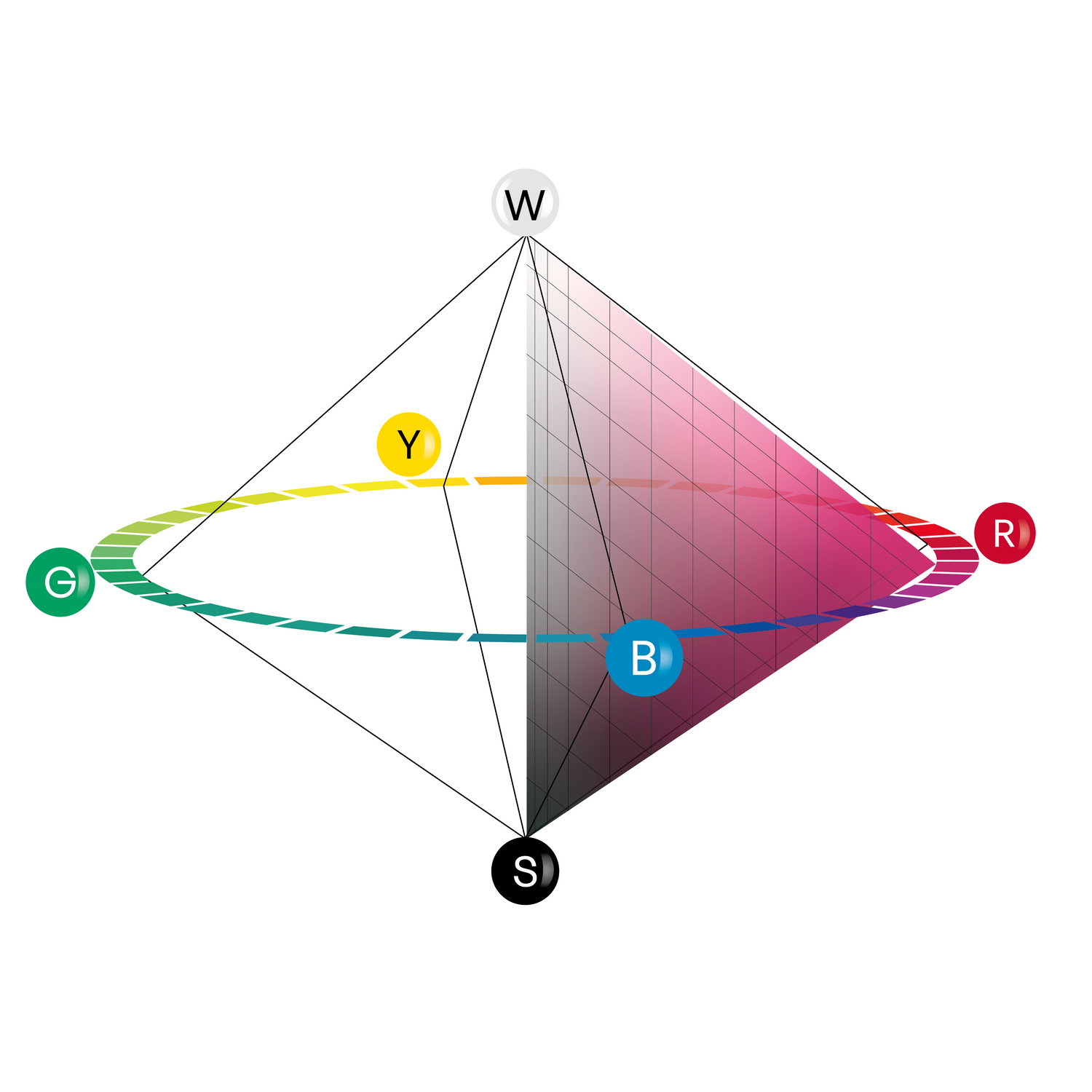
NCS Colour Space
Imagine colours in a three-dimensional (3D) space. White and black are on a vertical axis while the other four elementary colours are plotted in a circle around it. This allows colours to be identified with NCS Notations with greater accuracy than a 2D space would provide.
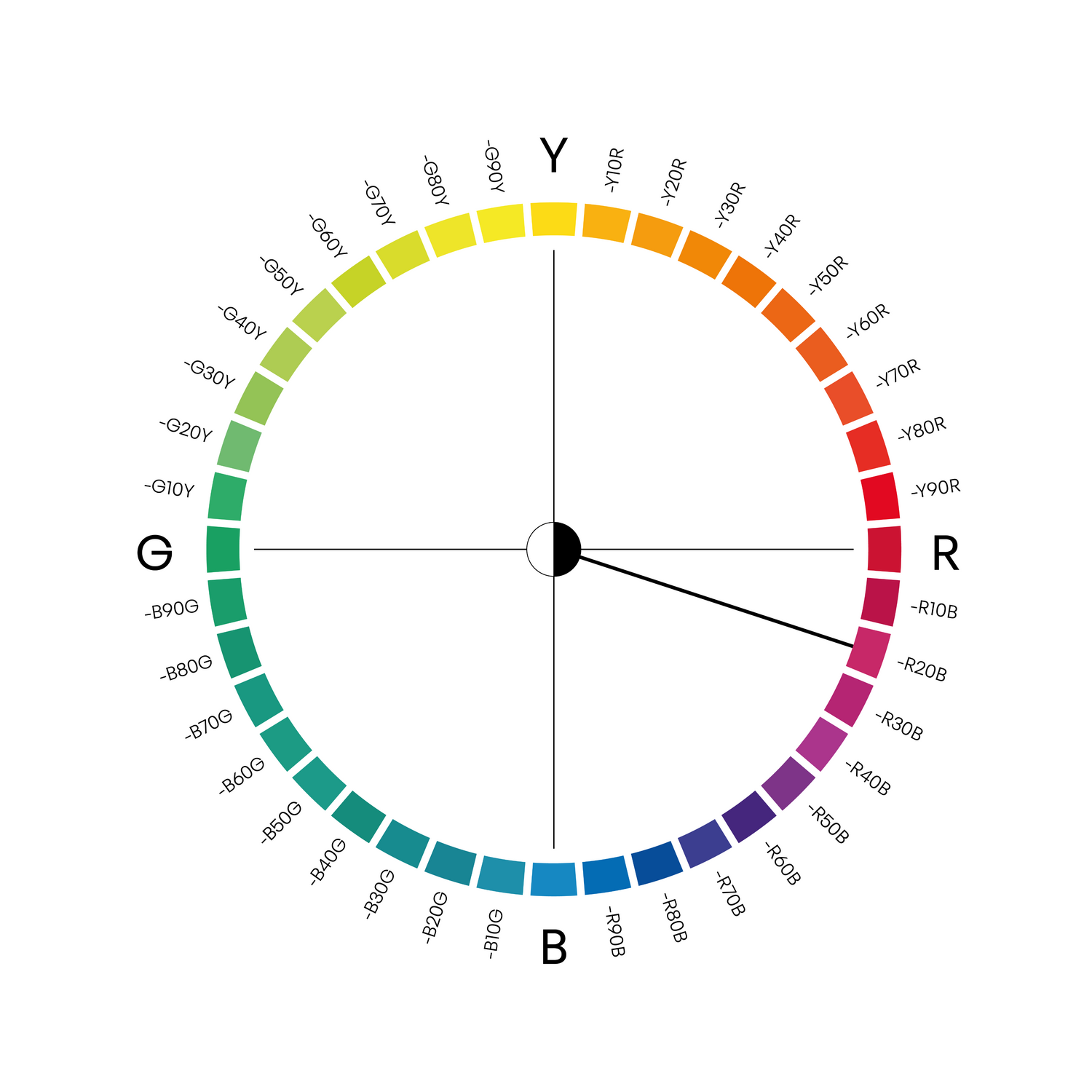
NCS Colour Circle
As one of the dimensions of the colour space, the NCS Colour Circle cuts horizontally through the centre. It describes the hue in relation to the four elementary colours.
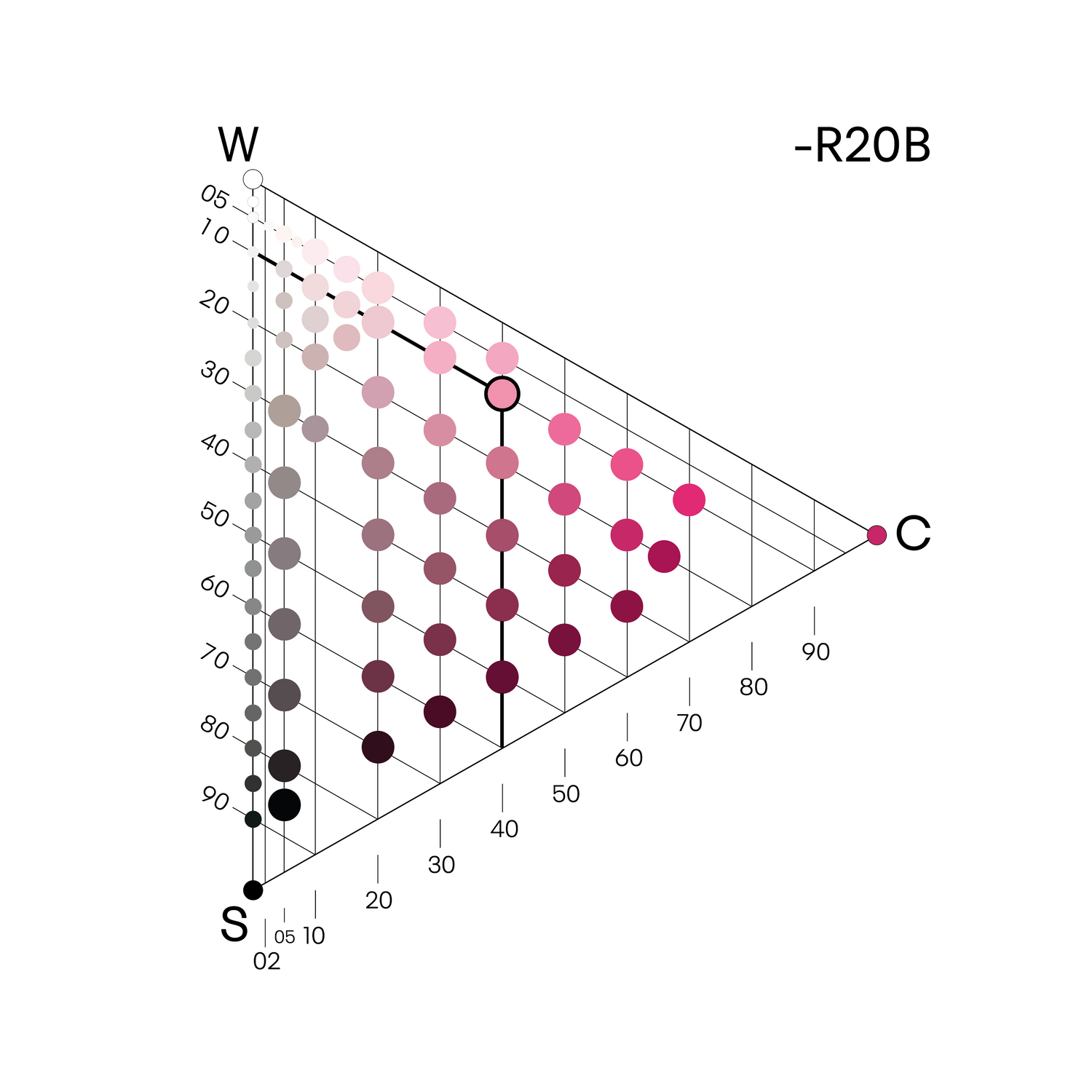
NCS Colour Triangle
As the vertical dimension of the colour space, the NCS Colour Triangle defines each of the different hues' nuance.
NEUTRAL COLOURS: All pure grey nuances are considered neutral. They run along the back of the triangle and lack a hue. They are coded with N as neutral.
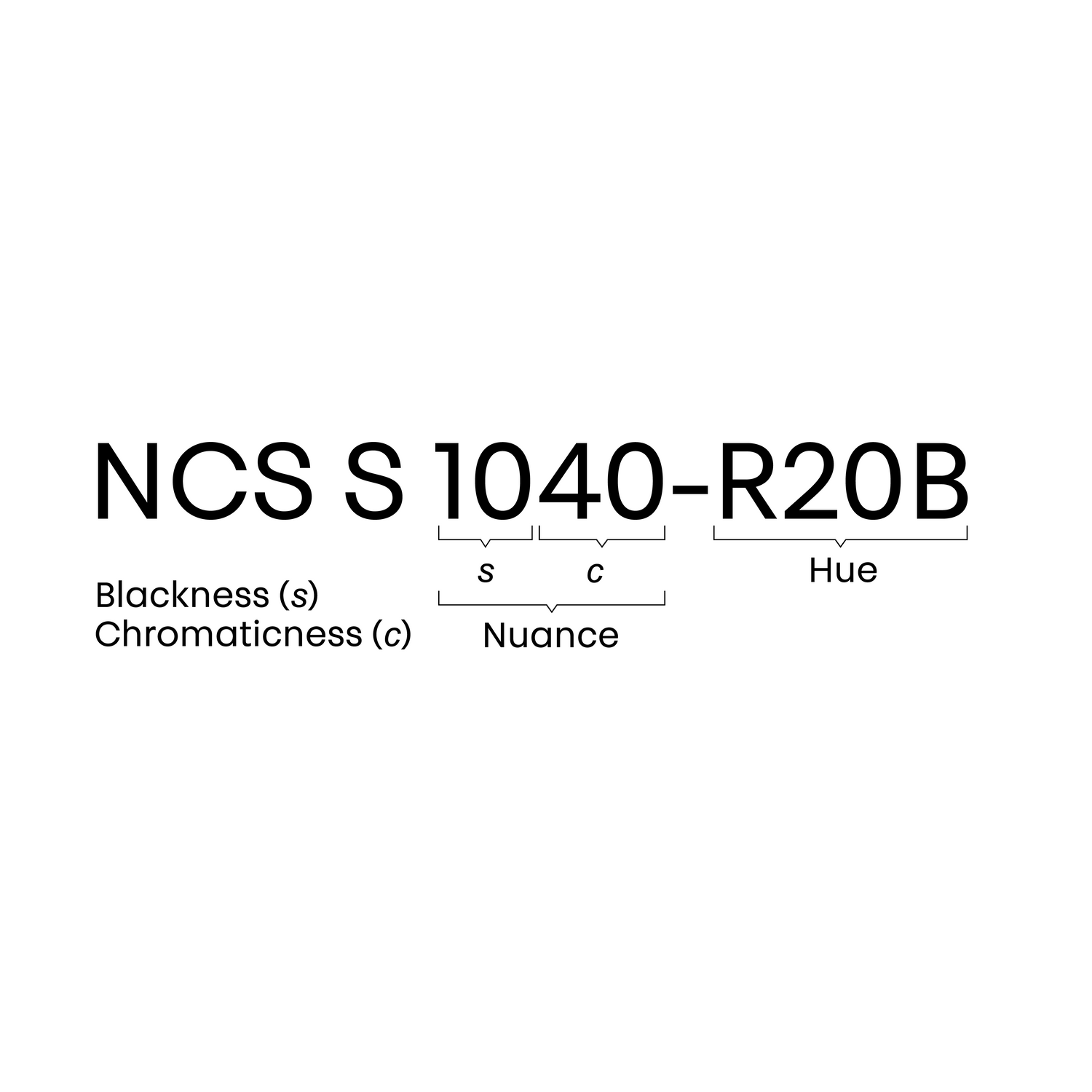
NCS Notation
The colour notation or code NCS S 1040-R20B has the nuance 1040, i.e. 10% blackness and 40% chromaticness. The hue, R20B, is a red (R) with 20% blue (B) in it.
Click here for a complete list of NCS Literature References.
NCS Education
Colour Academy
Enrich your understanding of colour by joining our Colour Academy courses. Tailored exclusively for architects, interior designers, product designers and professional colour advisers, these courses deepen your mastery of colour communication.
NCS Quick Course
Take our free Quick Course to learn the NCS System in 20 minutes.
White paper
How the NCS System Ensures Colour Quality
Across NCS portfolio, we offer products and services that support professionals when working with colour. The NCS System ensures colour quality and precision in colour matching while facilitating clear communication across teams, professions and stakeholders.
In this white paper, you will learn how implementing the NCS System with appropriate quality control solutions helps maintain high standards and meet your customer expectations.
